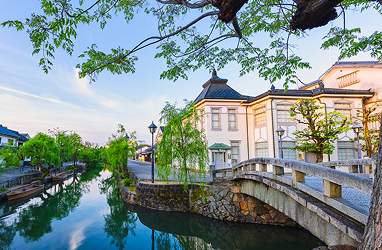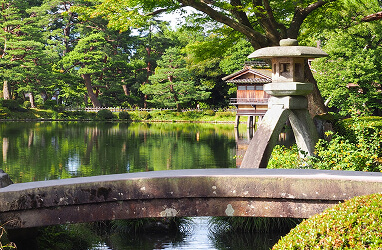
Japanese Garden
— Nature Shaped by Hand
- Home
- Japanese Garden
Japanese gardens are not merely landscapes—they are refined expressions of nature’s elegance and human craftsmanship. Reflecting the subtle transitions of the seasons, these tranquil spaces offer a sanctuary of peace and introspection. Rooted in centuries of tradition and philosophy, Japanese gardens have captivated the world with their unique aesthetic sensibility. This guide invites you to explore the origins, the secrets of the structural design, and the immersive beauty of these living masterpieces.
Essence of Japanese Garden Aesthetics

More than decorative scenery, Japanese gardens embody a deep introspection and artistic balance through the embrace of nature's imperfection and silence. They invite visitors to contemplate the quiet beauty of nature and the passage of time.
Origins and Spiritual Depth
Since ancient times, Japanese gardens have been designed as serene spaces for quiet contemplation and reflection. Influenced by the aesthetics of wabi-sabi, which values asymmetry and the beauty of empty space, they elevate natural elements into poetic symbols, expressing the transience of time and the serenity of stillness.

Dialogue with Western Gardens
Unlike the geometric precision of French formal gardens or the pastoral charm of English gardens, Japanese gardens emphasize spiritual depth and inner landscapes. Their delicate sensibility has influenced Western artists, such as Monet, and served as a cultural bridge between Eastern and Western artistic traditions, much like the ukiyo-e woodblock prints.
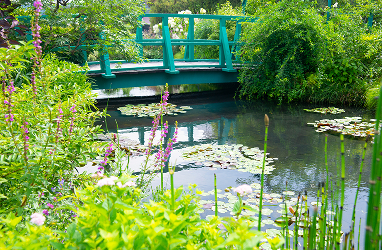
Unveiling the Secrets of Japanese Garden Design
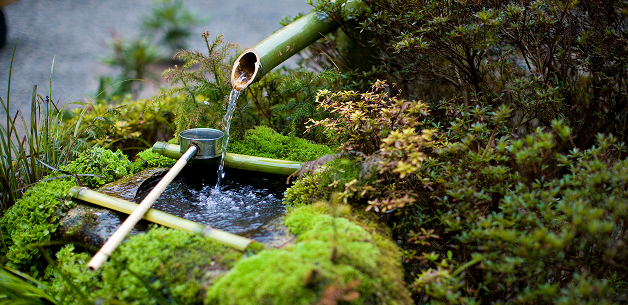
By understanding the fundamental elements of Japanese gardens, visitors can uncover the symbolic meanings and stories hidden within each detail. Stones, moss, water, and plants are not just materials—they are carriers of meaning, reflecting the designer’s vision of time, space, and spirit.
Symbolic Elements — Water, Stones, Plants, and Garden Features
Stones represent mountains or permanence, carefully placed to convey strength and depth.
Moss symbolizes softness and the accumulation of time.
White sand and gravel evoke flowing water or the gentle sound of a stream.
Garden features, such as bridges and lanterns, add both beauty and function. A bridge may symbolize a
journey or transition, while a lantern creates a sacred ambiance through the interplay of light and
shadow.
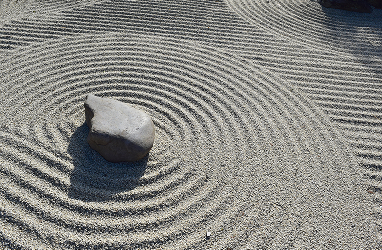
Garden Styles — From Zen Stillness to Strolling Elegance
Each style of Japanese garden offers a distinct experience:
Dry Landscape Garden ("Karesansui Garden") utilizes only stones and sand, abstractly depicting natural
scenes and embodying the principles of Zen philosophy. The arrangement of sand patterns and stones
reflects cosmic and spiritual ideas.
On the other hand, designed around a central pond, Strolling Garden ("Chisen-kaiyū-shiki Garden")
invites visitors to walk and enjoy changing seasonal views.
Tea Garden ("Roji Garden") is a modest garden that leads to a teahouse, emphasizing simplicity and
mindfulness. The textures of stepping stones and moss play a vital role in the visitor's sensory
experience.
These styles reveal that Japanese gardens are more than visual beauty—they are philosophical art forms.
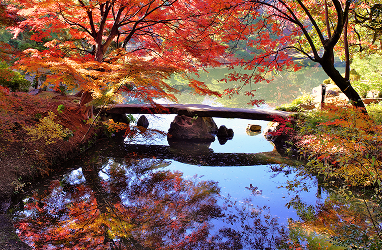
Savoring Stillness Through the Senses
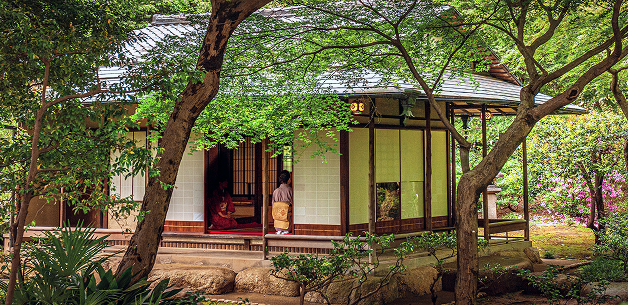
Japanese gardens provide a serene space to sharpen the senses and find inner calm amidst slow, mindful moments.
Mindful Moments — Connecting Body, Mind, and Senses
Stroll gently with loved ones, listening to the murmur of water and the whisper of wind, feeling the texture of moss and stones, and watching the seasonal changes unfold. These quiet moments offer healing and insight. Away from the rush of daily life, this unhurried time brings deep peace and connection.
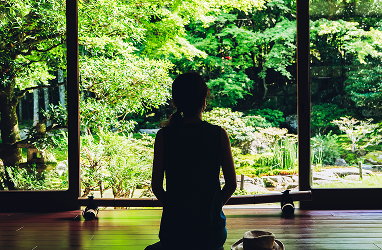
Elevate your journey with a touch of exclusivity.
On our tours to Kyoto, Kanazawa, and Okayama, we can arrange itineraries that include Japan’s most captivating gardens. Simply choose your preferred tour, and after booking, consult with your guide to create a refined experience tailored exclusively for you.

